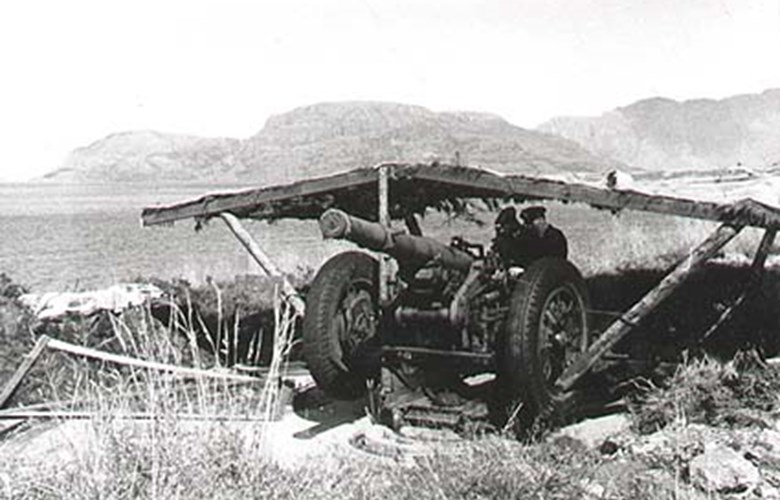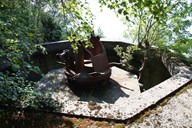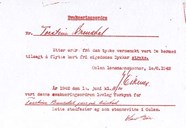Command site with facilities inside the mountain
The coastal fort at Risenes was the fourth and last the Germans built at the entrance to the Sognefjord. The purpose with the coastal fort was to use guns that could reach targets westward to the waters of Sognesjøen and the shipping lane north towards the strait of Krakhellesundet. A large area at Risenes and in the mountains to the east became a part of the coastal fort. Torstein Brensdal's farm was located in the centre of the fort and the German battery commander used the residence as quartering. Close by, a bunker was built as a command post. Some time later, the Germans started to build a new solid command post inside the mountain just behind the first one. From this bunker a tunnel was blasted into two mountain halls.
The guns
The main artillery of the battery consisted of four French 105mm field guns. Many of the guns the Germans used in their coastal forts were taken from the countries that they had occupied. The guns were placed in positions along the road from the bay of Risenesvika and southward. In the hills above Risenes two anti-aircraft guns were located. There was never any direct attack on the fort at Risenes, but on 14 November 1944, the steamer "Gula" was bombed by allied aeroplanes when she passed Dingja. The captain took the burning boat ashore at the point of Vareneset, in the centre of the German coastal fort. The German soldiers took part in extinguishing the fire and the rescue operation of passengers.
Construction work
In the years the Germans were stationed at Risenes there was much construction activity. German engineer soldiers and experts from "Organisation Todt" took part, as did a substantial number of Norwegian workers. Barracks were also built for Russian prisoners of war, but none came to Risenes as long as the war lasted. In addition to the command post in the mountain, a big bunker was completed in one operation. For three days running, two 500-litre cement mixers worked non-stop until the job was done. Elsewhere at the fort, five small tunnels were blasted to be used as ammunition depots and places where the soldiers could seek cover.
Facts and figures of the coastal fort at Risenes:
German name on the fort: HKB 16./981 Risenaes Personnel: 104 officers and soldiers Main artillery: 4 French 105mm field guns; 2 Russian 88mm guns In operation from: September 1942
Clearing up and closing down
In June 1945, the Norwegian coastal artillery took over the fort at Risenes, and in August, people could move back to their farms. However, a major clearing-up operation was needed. The infields were covered with blasted rock, there were huge rock fillings, broken tiles, barbed wire and worn-down houses. Parts of the fort were still tied up by the Coastal artillery with the view of making this a permanent defence facility. Only on 1 January 1949, was all property formally banded back to the owners.



